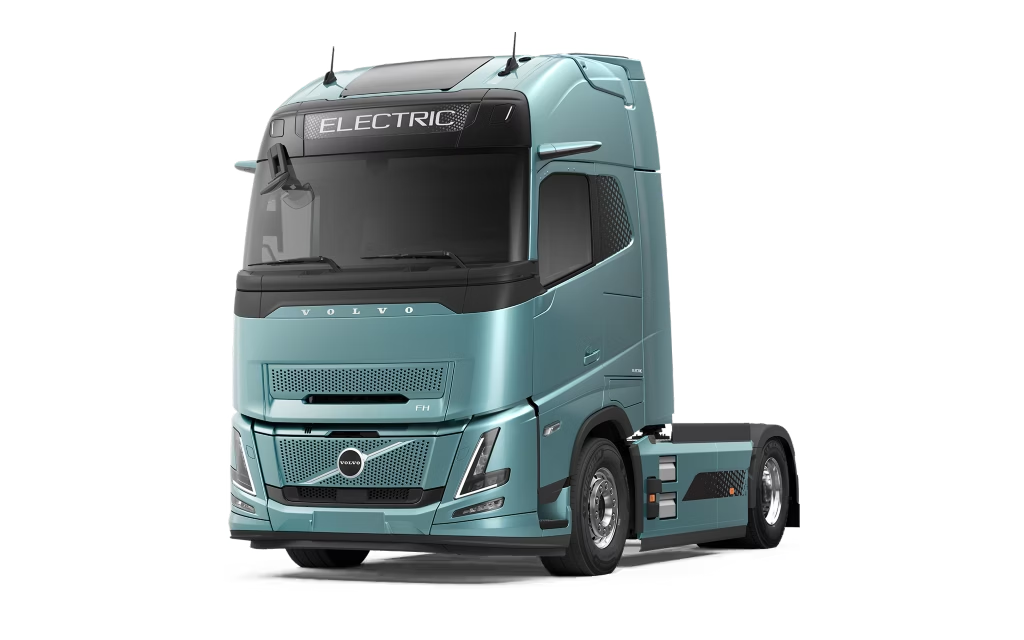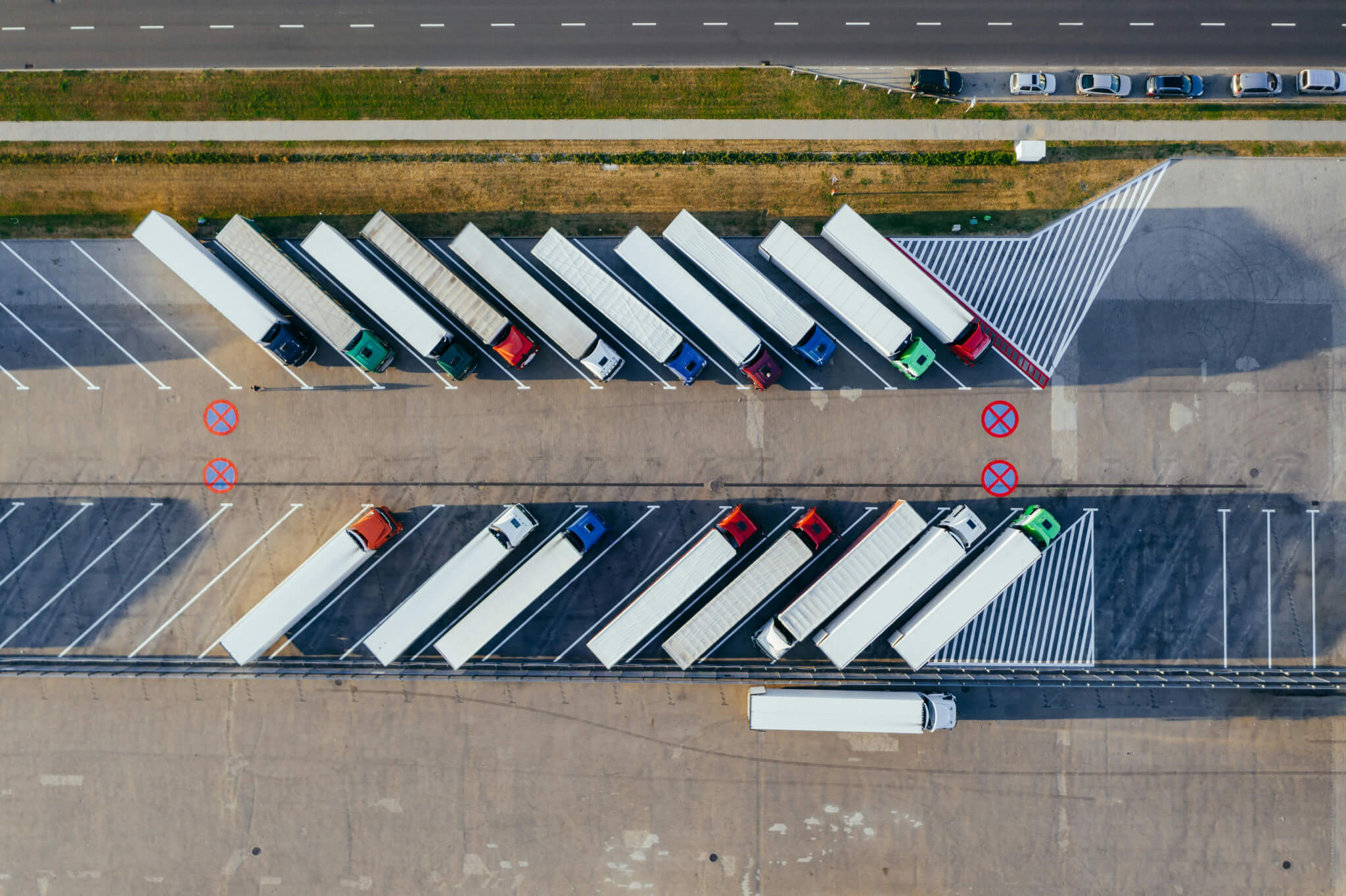The Road Ahead: Electric Trucks in the UK
The UK road freight industry is at a turning point. As the nation strives to achieve its net-zero emissions targets by 2050, the rise of electric trucks represents one of the most significant transformations the logistics and haulage sectors have ever seen.
Electric trucks and electric heavy goods vehicles, eHGVs, have been talked about for some time. These have largely centred on whether they will ever happen and what impact they would have on truck insurance. Most of our HGV insurance clients believe they will happen one day, but that day is far off. They’re more concerned with things like a shortage of drivers, increased paperwork when it comes to European runs, and the rising costs of maintenance to be too concerned with what their truck’s power source will be in a decade.
Attitudes are changing, though. With major manufacturers including Mercedes-Benz, Renault Trucks, DAF, Volvo, MAN, FUSO, and Iveco all bringing vehicles to market, change is in the air. The question, ‘How much is electric truck insurance?’ wasn’t one we’d been asked until this year. And while it’s not one we get asked every day, we are being asked. Developments like the announcement of BP and Moto to bring eHGV charging to the UK’s motorways are an indication of the shape of things to come. With the ban on the sale of new diesel lorries coming in 2035, and with all lorries needing to be emission-free by 2040, the clock is ticking. eHGVs offer truck owners a wide range of advantages, including:
- Cheaper to run – studies suggest 40-60% lower energy costs per kilometre and 26-51% lower fuel expenses
- More reliable – fewer moving parts make them less likely to break down
- Lower TCO – the total cost of ownership will be reduced
- Improved resale value
- Reduced congestion charges
From an insurance perspective, things are a little more complicated. Insurers don’t like change, as change brings a change in risks. While it’s an industry that’s typically slow to change, when it comes to eHGVs, it’s moving fast as it tries to keep up.
So, what’s actually changing for electric truck insurance in the UK in 2025? In this latest blog from Coversure, we’ll look at what’s coming down the road and what hauliers and logistics businesses need to do to prepare for the changes ahead. We hope this guide proves useful, but if you’d like some more help or a truck insurance quote, then please get in touch. You can call us on 04182 434343, request a callback or get a quote, and our experienced team will be happy to help.
How Electric Truck Insurance Differs from Diesel Cover
While electric trucks perform the same core function — moving goods from A to B — their insurance profile is different in several key ways.
- Higher Vehicle Values – at the time of writing, electric trucks typically cost 30–60% more upfront than their diesel equivalents. That higher asset value pushes up comprehensive insurance premiums, especially when it comes to HGV fleet insurance that potentially requires replacing multiple units
- Battery Risks – there’s been an awful lot of talk about vehicle battery life. When electric cars started to become popular with fleet owners, insurers began factoring battery risks into fleet insurance. The battery pack is one of the most expensive and most vulnerable components of an electric truck. Issues like thermal runaway, charging faults, or damage during loading present new kinds of risk that traditional truck policies didn’t account for. To overcome these/keep costs down, we’re seeing insurers offer battery-specific cover, including protection for things like degradation and replacement costs. With a replacement battery costing between £3,500 and £14,300, specific cover could prove a wise investment
- Repair and Replacement Costs – again, as with electric car fleets, the costs of repairs for electric trucks are going to be higher, in the short-term at least. The rise in insurance premiums since the pandemic has largely been down to increased repair costs and the cost of providing courtesy vehicles for longer periods. eHGVs will require specialist engineers and OEM-approved workshops, which will lead to longer downtime and higher claim costs. This is pushing insurers to adjust claim handling models and develop approved EV repair networks
- Limited Claims Data – with electric trucks still relatively new on UK roads, insurers lack long-term accident and repair data. This data uncertainty can lead to more conservative pricing, particularly when it comes to HGV fleet insurance. The good news is that insurers are investing heavily in AI technology and working with manufacturers’ test data to be ready with competitive, go-to-market policies
The 2025 Shift: What’s Changing Right Now
But enough of the future, what’s happening in the truck insurance world now? 2025 marks a major year of transition for electric truck insurance in the UK. Several policy, regulatory, and market changes are shaping how premiums are calculated and what’s covered.
1. New Underwriting Models for EVs
Insurers are introducing eHGV-specific underwriting criteria. These are focusing on things like:
- The battery type and warranty length – larger, more powerful ones will cost more to repair/replace, and those with long manufacturer warranties will be cheaper as they’re expected to last longer and will be covered by someone else
- Charging locations – whether trucks are charged at a depot or a public network will have a bearing on things. Public charging points are likely to be more congested, and increase the risk of an incident
- Average daily mileage and route type – short routes will mean fewer risks of an accident, but they will also put more strain on the battery and reduce its life
- Driver training on EV handling – ask any electric car driver, and they will tell you driving an EV feels different. Quieter, smoother, with sharper brakes and a different ride experience owing to the lower centre of gravity, drivers will need to be trained on them if they are not to have an accident or significantly increase wear and tear. This presents owners with an opportunity to reduce their truck insurance quotes by training their drive
2. Government Incentives and Infrastructure
Switching to an electric HGV fleet isn’t cheap, and the charging infrastructure isn’t good enough to enough. These problems have been proven to be massive drags on the transition to electric trucks in the UK. Gov.co.uk’s figures show that at the end of 2024, there were just 1,271 electric HGVs on the UK’s roads in 2024. While this was a 28% increase from 992 in 2023, it means they represent 0.02% of the UK’s HGVs.
To combat this, the government’s Zero Emission HGV and Infrastructure Demonstrator (ZEHID) Programme and plug-in truck grants are expanding rapidly in 2025. The Zero Emission Road Freight Demonstrator is a £200m fund designed to help firms make the switch. The programme is based on four strategic pillars:
- Deploy zero-emission HGVs – by showing how batteries and hydrogen cells can be practical
- Build industry confidence – by giving operators and policymakers insights into infrastructure needs and the cost-effectiveness of these vehicles
- Stimulate innovation – so making the switch affordable and scalable
- Lay the foundations for a UK-wide electric truck transition
The Plug-in Van and Truck Grant provides discounts on eligible new electric HGVs, through the grant. It offers up to £25,000 for large trucks and £16,000 for small trucks. While this won’t cover the difference in price between a diesel and an electric truck’s purchase price, other factors, such as lower running costs and environmental benefits, mean it is helping some truck owners to go green.
As uptake continues to grow, insurers are responding with specialist products that bundle HGV breakdown cover, battery failure, and charging equipment protection into one policy. This comprehensive approach is likely to see demand for electric truck insurance grow in the next couple of years.
3. Integration of Telematics and AI
The data-driven insurance model is the future of truck insurance, and electric trucks come with built-in telematics and data analytics. While telematics systems have been around for years, the new generation offers real-time data that’s far more detailed – a goldmine for insurers. By tracking driver behaviour, charging habits, and maintenance alerts, insurers can reward safer, more efficient operators with usage-based discounts. Given that HGV insurance is one of the biggest costs operators face and the recent rises in truck insurance quotes, this could be yet another spur to the transition to electric vehicles.
4. Sustainability as a Pricing Factor
Some insurers are now factoring sustainability scores into their underwriting, rewarding fleets that cut emissions, optimise routes, and demonstrate strong Environmental, Social, and Governance (ESG) credentials. This not only aligns with environmental goals but also supports insurers’ own green investment strategies. A 2024 ONS survey revealed that 25% of UK consumers will actively change retailers if green delivery isn’t an option, while another survey found 40% would do so sometimes. Such commercial pressures will have a significant impact on the logistics sector as a whole.
Truck Insurance 2025: Challenges & Opportunities
The move to electric trucks is happening, but it’s got off to a slow start. The same old challenges remain in place, most notably the cost of vehicles, lack of charging infrastructure, repairs and parts, and concerns over residual values, particularly for total-loss scenarios.
There are opportunities too, especially for HGV fleet operators:
- Discounts for Early Adopters – we’re seeing insurers now offer reduced premiums for electric fleets that can demonstrate strong maintenance regimes and safe driving data
- Bundled Cover Options – including electric truck insurance, goods in transit cover, public liability, HGV breakdown insurance, and charging station protection are coming on stream. This all-in-one model simplifies risk management and may offer cost savings in the same way that HGV fleet insurance does, compared to traditional multi-policy setups
- Improved Risk Management Tools – data-driven insurance models and insurer digital dashboards to monitor driver efficiency and claim frequency will help reduce costs
The Future of Truck Insurance in the UK
Looking ahead, the future of truck insurance is heading toward data-led, sustainability-focused cover. Specifically, we’re likely to see:
- Dynamic pricing – based on real-time usage data
- Battery performance guarantees – integrated into insurance, relieving owners of concerns about battery life/failure
- Parametric policies – where payouts are automatically triggered after specific incidents, such as a battery fire or charger failure
- Closer partnerships between OEMs, telematics providers, and insurers – collaboration will be key, especially as driverless trucks come to market
By 2030, most new UK trucks are expected to be zero-emission. This means the insurance industry will need to completely reinvent its models to cover the new risks associated with this shift.
Conclusion
The rise of electric truck insurance in the UK is more than just an industry trend — it’s a signal of a fundamental shift in how risk is understood and managed in logistics. As HGV fleets electrify, insurers are evolving to reflect new technologies, environmental priorities, and data-driven decision-making. For operators, that means a chance not only to cut emissions but also to benefit from smarter, more flexible options, ones that will ultimately lead to cheaper truck insurance quotes. The future of truck insurance is cleaner, more connected, and more customised, and 2025 is the year that change truly accelerates.
Like some truck insurance help?
If you’d like some personalised advice on getting cheaper truck or HGV insurance or a truck insurance quote, please call us on 01733 915 050 or request a callback. You may also find our truck insurance guide useful.




